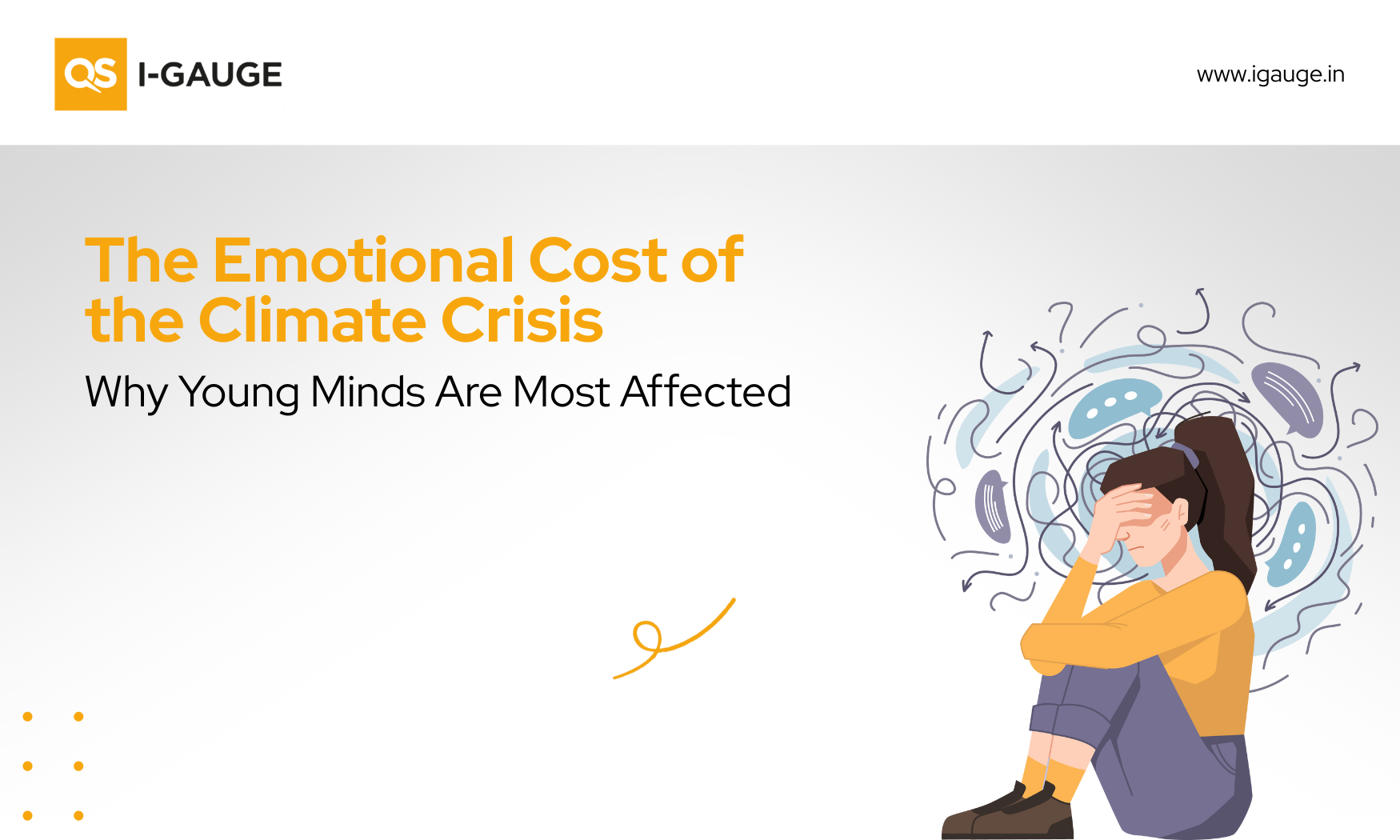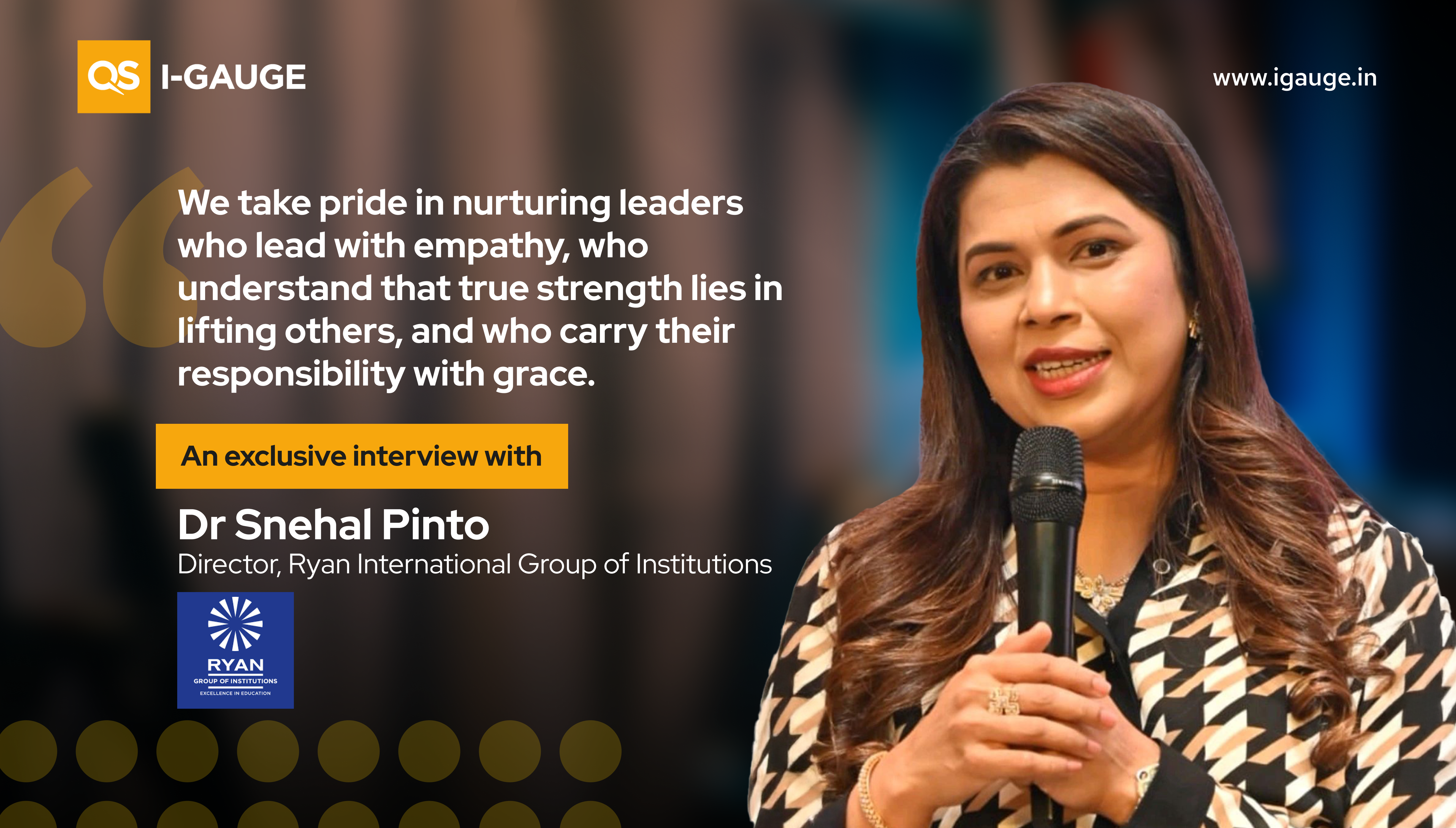
An exclusive interview with Mr Jacob Thomas, President, Good Shepherd International School, Ootacamund
Written By Dr Himanshu Pawar, Market Research Analyst, QS I-GAUGE
The Good Shepherd International School is basking in the glory of its visionary founders, Dr P.C. Thomas and Mrs Elsamma Thomas, who adopted a multidisciplinary approach to education, creating a community of progressive and lifelong learners. Their motto: “Truth, Trust, and Triumph”, serves as a beacon of light for their students who are taught to embrace secular and ethical values in an inclusive atmosphere that fosters growth, learning, and harmony.
QS I-GAUGE, in an incisive discussion with the school's current president, Mr Jacob Thomas, brings to the fore key insights into the growing demand for international school education in the K-12 segment in India. Multiple themes were inquired about, such as the internationalisation of education, the rise in hybrid curricula, the role of NEP 2020 in school education, and the blended approach to teaching and learning in classrooms that are of contemporary relevance for parents, market leaders, and other stakeholders.
At the outset, we began the discussion by understanding the motivating factors behind the foundation of the Good Shepherd International School (GSIS) in the late 1970s. Mr Thomas explained: “One unique aspect of the motivation came from the fact that both my parents were teachers and avid educationists. My father was a deep thinker and a strategist, and drew motivation from his early childhood experiences as a student. He wanted to translate the missing aspects of those experiences into a holistic form of education, which eventually mapped the blueprint for GSIS.”
Upon inquiring into the importance of having a globally recognised curriculum for GSIS and the need for benchmarking international practices for Indian schools, he said, “The demand for globalisation is a prelude to expansion, and we live in a world of prosperous opportunities. I believe education should also be looked at from a universal point of view. The metrics for benchmarking education are not easily ascertained since we do it at a particular point in time, and the world around us constantly evolves. It is complex to say that you have benchmarked something with a like-for-like comparative.”
Having said that, Mr Thomas took a detour to the QS India summit 2024 in Chennai to bring our attention to an interesting observation that he gathered from the audience, i.e. “Many organisations do multiple things well, it is crucial to ascertain one organisation's efforts to do better than another under measurable metrics from a holistic perspective”. He says, “Even after being in the school segment for more than 40 years now, GSIS still scouts for advancements and developments in the education sector to determine their institutional-specific feasibility.”
Mr Thomas opined more on the need for an impact assessment for schools. He said, “Accessibility of education is on the rise in India, and as we grow, we must focus on the scope and quality of education to make a real difference.”
Citing the data from the International School Consultancy (ISC) report from February 2024, stating that the total market for international schools in India grew by 8.5% in the last five years, we asked Mr Thomas to share his insights into the geographical landscape of this growing demand and its future in India. Elaborating on this growing demand, Mr Thomas corroborated the data directly to the Indian economic growth statistics. His observations pointed to the tier-2 and 3 Indian cities contributing massively to the nation's economic growth. He believes industries in tier-two cities are getting more sophisticated, attracting investment and raising demand for a higher-end skill set.
He said, “I can see more demand for international education even from tier 2 and 3, where the more affluent are willing to venture outside their comfort zones, particularly girls. We at GSIS have increased the seats for girl students due to the rising demand for quality education, and we take pride in empowering as many girl children as we possibly can.”
The demand for international education also encompasses the fact that Indians are among the most affluent people outside their home country; we are driving some of the largest companies in the world, and the demand for quality international education is thus on the rise. Additionally, India has opened 10% of all international schools worldwide since 2022. The presence is just below China regarding the overall number of schools India hosts, i.e. 923. The five key curricula that dominate the global market for international schools are the UK, US, Cambridge, IB, and Advance Placement, making up 77% of the curricula for international schools.
In light of this narrative, we asked: considering India to be the world's second-largest market for international schools, is there a scope for some academic collaboration to develop a dedicated Indian international curriculum for the world, or are we still not ready?
Mr Thomas found this proposition interesting; he believes that GSIS should build their own teaching pedagogy and said, “It is incumbent upon us to do this task because we are a fully residential school. Being one, we have certain advantages when it comes to allocating time that a day school does not. The additional time that we have with us is addressed to pedagogical reforms. However, there are no leading benchmarks in the market to borrow the pedagogical structures, so I think it is an opportunity for us to borrow the best practices from IB, Cambridge or NEP 2020 and customise them to our institutional needs and vision.”
His thoughts on using hybrid curricula in Indian international schools reflected a positive outlook for the institutions. He gave examples of blended Cambridge and IBDP curricula for 11th and 12th, which have been hugely successful in India. He said, “Cambridge offers a great international education perspective and assessment structure, whereas IBDP focuses on the US style of education since their universities look at students' success on multiple dimensions of student development, and that’s one of the reasons why IBDP is very attractive.”
A hybrid model is a very powerful form of education, and to implement it properly, schools must clearly understand what values they intend to derive from these curricula for their students. Giving the example of GSIS, he said, “We offer ICSE, Cambridge and IB, and in 2020, we became an IB continuum school because I am a big supporter of IB education. There are copious criticism factors surrounding the IB MYP Curriculum compared to US or Cambridge education. Still, if we understand it deeply, it certainly opens up new avenues for experiential learning and experimental pedagogy. For example, their curriculum for grades 6-10 focuses on a framework, a methodology and a set of outcomes, but it doesn’t tell you what to teach and what not to teach. This allows us to borrow from multiple curricula, such as the Cambridge and ICSE. This form of hybrid curricula enables an institution to tailor their teaching pedagogies, such as in the case of delivering STEM education, which doesn’t have a fixed teaching approach.”
Continuing the conversation over the importance of a holistic curriculum, the GSIS strongly emphasises “Beyond Academics” as a significant part of its curriculum. Sharing his thoughts on the need for such initiatives in a child's development, Mr Thomas said, “Trans-disciplinary or inter-disciplinary education is generally associated with good quality education; one must not attribute education to academics only but rather widen the horizon of knowledge and make use of its expansionist nature to enable students to create new knowledge. A much more powerful phenomenon that takes place in a child’s life is when they experience learning via the application of knowledge. The inquisitive nature of students must be nurtured outside the classrooms.”
On the digital education front, the importance of emerging technologies such as generative AI, Machine learning or Augmented reality cannot be discounted at the school level. Mr Thomas’s views reiterate the importance of upskilling resources and upgrading systems. He cautiously said, “I believe it is a very important issue and is not being properly addressed in schools today. It begins with the teachers, and most of the teachers in India are not technologically adept. However, as we have examples from COVID-19 when every school in the world was trying to put the classroom on a computer screen, teachers naturally learned a lot of technology with that kind of push-action. They got a sudden boost and were naturally forced to adapt to the new technologies. I believe no subject today should be taught without the use of technology. Students' distance to technology is very short, and they can easily adopt it, whereas adults always look up to the utility to guide their adoption process. School leaders must recognise the powerful role of technology and ascertain how to incorporate it into the pedagogy and integrate it into different parts of their campus.
Talking about NEP 2020 and its active role in facilitating the internationalisation of the higher education sector and the bleak representation of internationalisation of education at the school level, we asked Dr Thomas about his perspective on the role of NEP and Indian international schools in achieving global benchmarks and excellence.
He said, “Some of the state governments have encouraged schools to become IB schools first. I think it is beneficial for schools to adopt this approach under NEP to adopt best practices and well-established frameworks immediately. One of the challenges international schools face when adopting an international curriculum is the lack of trained teachers in India who can understand and are adequately trained to deliver the international curriculum. It will take India many years to realise the potential and intention of the NEP 2020 fully. Before building NEP schools, you need to create NEP teachers.”
In closing the discussion, Mr Thomas gave examples from his experience hosting 'IB Manthan' this year. This two-day event brings together teachers and educators to focus on best practices in teaching and learning. The conclave's training, structure, and content were eye-openers for Indian teachers who wished to upskill themselves in international pedagogies. The session included a completely immersive, hands-on workshop-style learning where teachers walked away with experiences, skills, capabilities and tools that they could functionally apply to their classrooms. He said, “We aim to uplift the quality of education in the country through such engagements for our teachers and include some form of teacher certification for our annual events. Most people have more than one career in their lives. You cannot start the education journey with a special destination in mind. It is all about an individual journey; a mindset rather than a skill set is required to create adaptable learners.”



